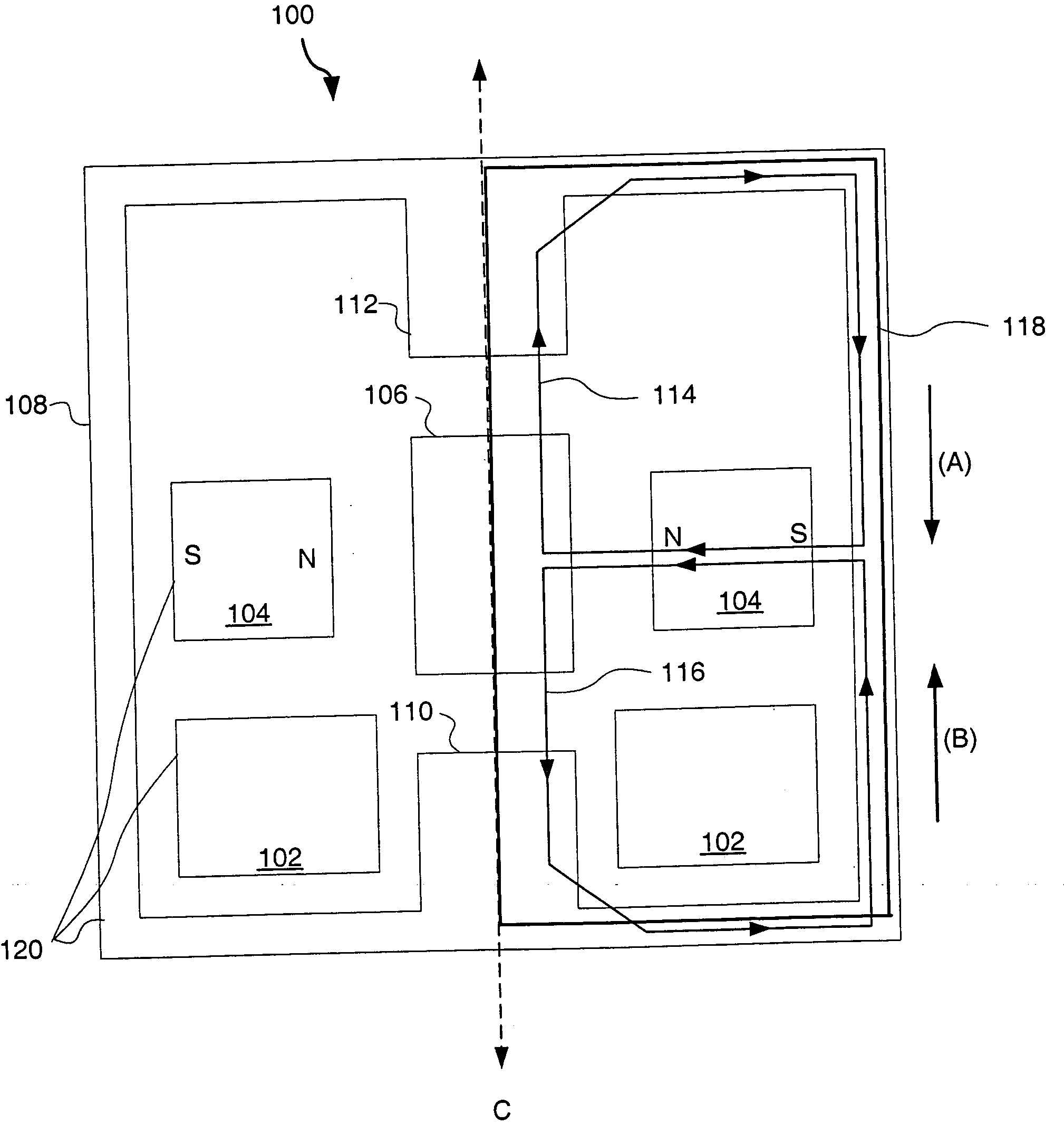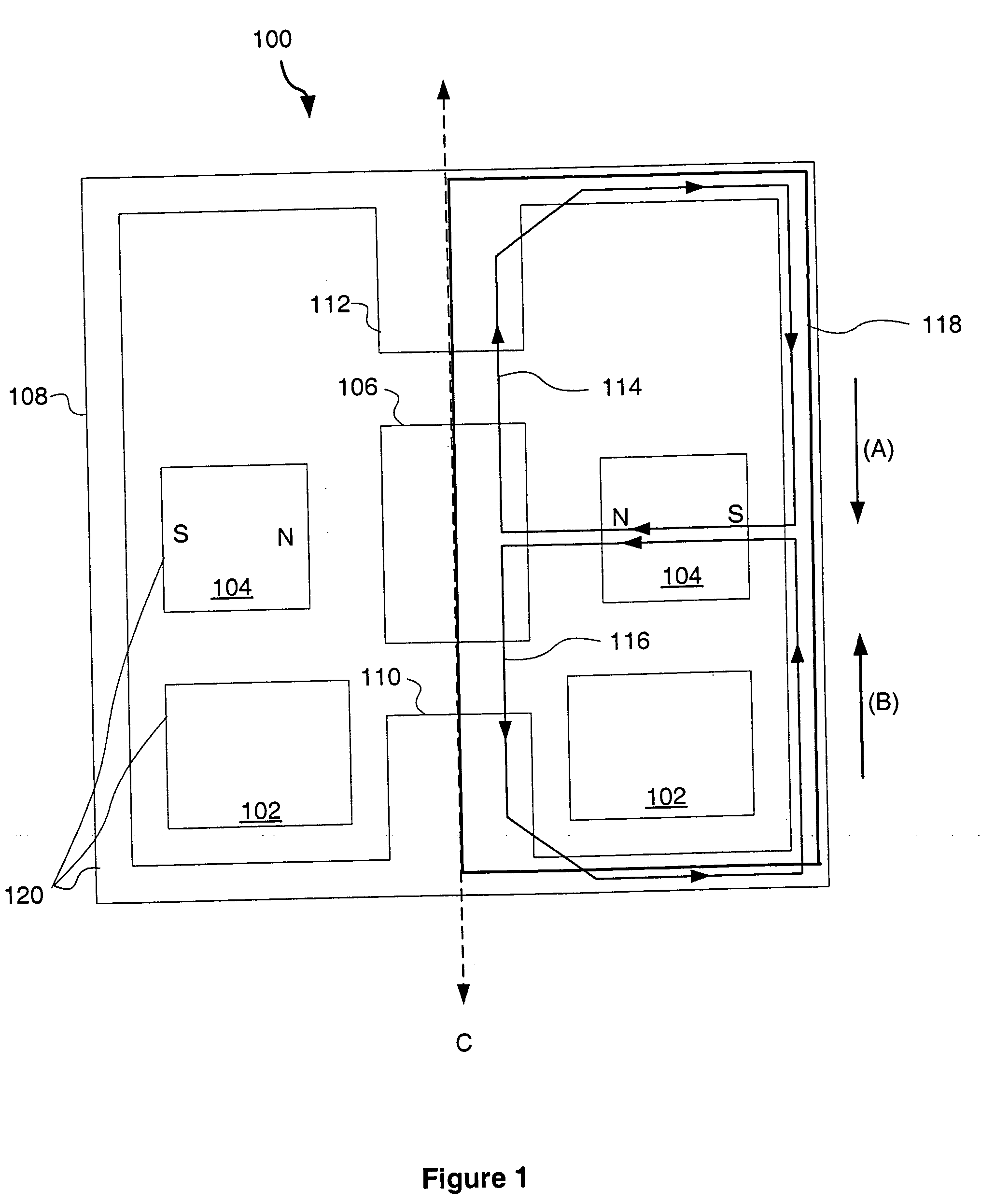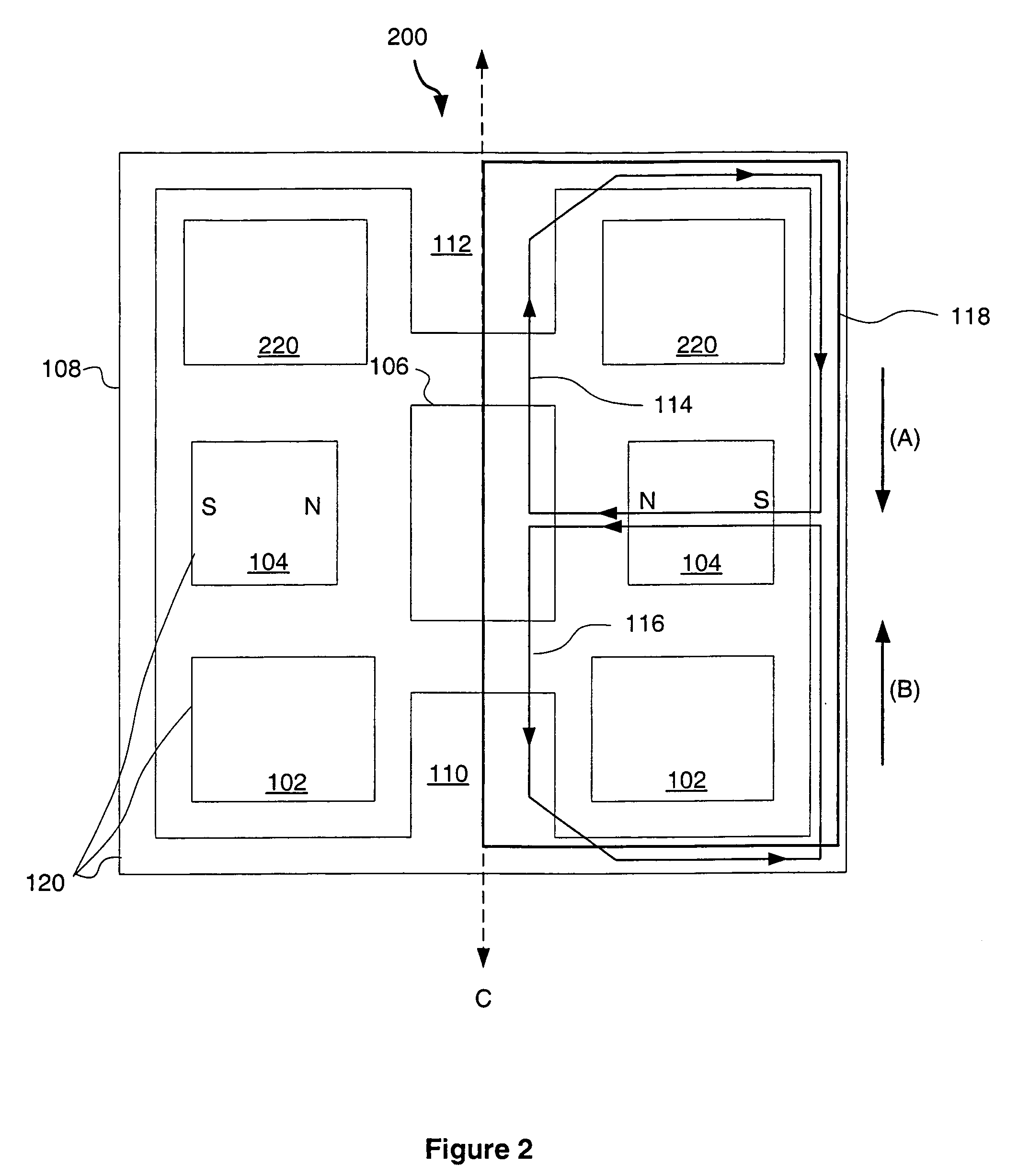Variable reluctance motor
a variable reluctance and motor technology, applied in the field of motors, can solve the problems of increasing the size of the magnet required for a given output force, and achieve the effect of improving the efficacy and operational characteristics of variable reluctance motors
- Summary
- Abstract
- Description
- Claims
- Application Information
AI Technical Summary
Benefits of technology
Problems solved by technology
Method used
Image
Examples
Embodiment Construction
[0030] Reference will now be made to the accompanying drawings, which at least assist in illustrating the various pertinent features of the present invention. In this regard, the following description is presented for purposes of illustration and description and is not intended to limit the invention to the form disclosed herein. Consequently, variations and modifications commensurate with the following teachings, and skill and knowledge of the relevant art, are within the scope of the present invention. The embodiments described herein are further intended to enable others skilled in the art to utilize the invention in such, or other embodiments, and with various modifications required by the particular application(s) or use(s) of the present invention.
[0031]FIG. 1 illustrates one example of a variable reluctance motor according to the present invention, namely motor 100. The motor 100 includes an armature 106 and a stator 120; including at least one drive coil 102, at least one m...
PUM
 Login to View More
Login to View More Abstract
Description
Claims
Application Information
 Login to View More
Login to View More - R&D
- Intellectual Property
- Life Sciences
- Materials
- Tech Scout
- Unparalleled Data Quality
- Higher Quality Content
- 60% Fewer Hallucinations
Browse by: Latest US Patents, China's latest patents, Technical Efficacy Thesaurus, Application Domain, Technology Topic, Popular Technical Reports.
© 2025 PatSnap. All rights reserved.Legal|Privacy policy|Modern Slavery Act Transparency Statement|Sitemap|About US| Contact US: help@patsnap.com



